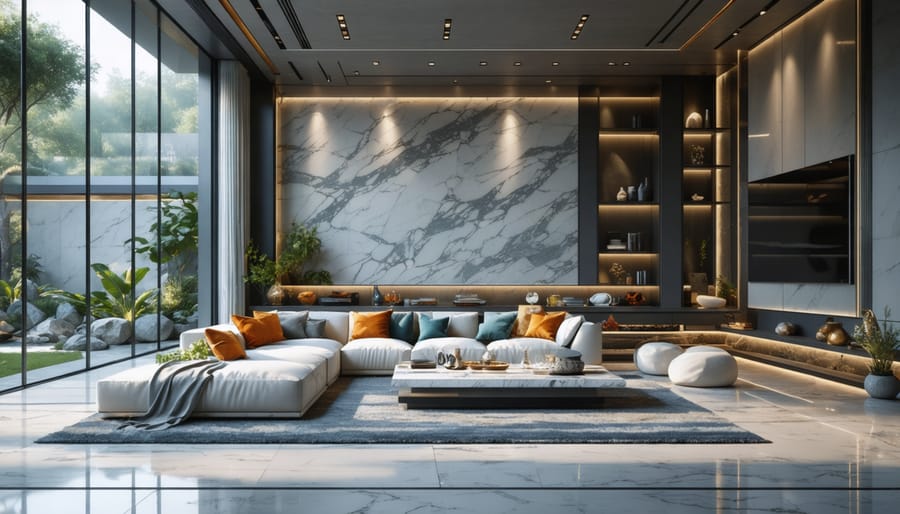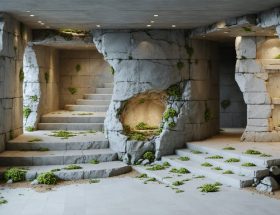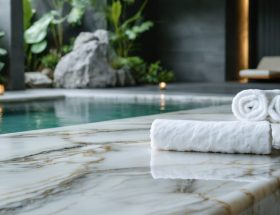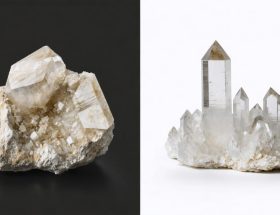In the quest for emotional harmony, natural stones emerge as powerful allies, offering more than mere aesthetic appeal. These ancient Earth-formed minerals carry inherent properties that influence our psychological well-being through their unique vibrational frequencies and mineral compositions. From the calming presence of rose quartz in meditation spaces to the grounding effect of black tourmaline in high-stress environments, emotional balance stones create tangible shifts in our living and working spaces. Scientific research increasingly supports what ancient civilizations understood intuitively: the interaction between human energy fields and crystalline structures can significantly impact our emotional state. Modern interior designers and wellness practitioners now integrate these natural elements strategically, combining traditional wisdom with contemporary applications to create environments that actively promote emotional equilibrium. Whether incorporated into architectural features or displayed as sculptural pieces, these stones serve as both functional tools for emotional regulation and stunning focal points that transform ordinary spaces into sanctuaries of balance and harmony.
The Science Behind Stone’s Emotional Impact
Color Psychology of Natural Stone
Natural stone colors profoundly influence our emotional state and mental well-being, with each hue carrying distinct psychological effects. Warm-toned stones like golden sandstone and rust-colored quartzite evoke feelings of comfort, energy, and optimism, making them ideal for social spaces. Brown and beige stones, common in travertine and limestone, create a grounding effect that promotes stability and security.
Cool-toned stones offer different emotional benefits. Gray granite and slate can induce feelings of calm and professionalism, while blue-tinted stones like azurite promote tranquility and mental clarity. Green stones, such as serpentine and green marble, connect us with nature and encourage balance and harmony.
White stones, including pure marble and white quartzite, create a sense of cleanliness, purity, and mental freshness. Black stones like absolute black granite convey sophistication and power while helping to anchor spaces emotionally. Multi-colored or patterned stones combine various psychological benefits and can create dynamic emotional responses, making them versatile choices for spaces intended to inspire or energize.
Understanding these color-emotion relationships helps in selecting the perfect stone to achieve desired emotional outcomes in any space.
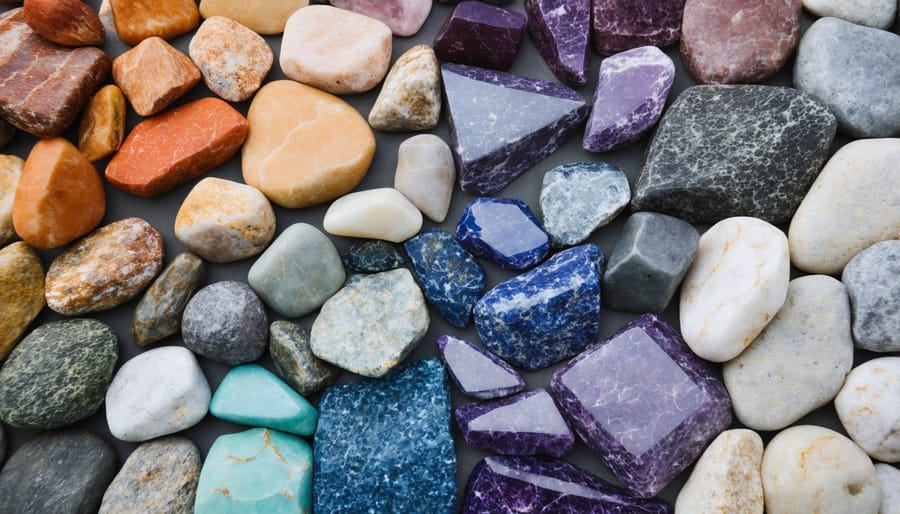
Texture and Tactile Connection
The tactile experience of natural stone creates a profound connection between our physical senses and emotional state. Smooth, polished surfaces can evoke feelings of serenity and sophistication, while rough-hewn textures provide a grounding, earthy sensation that helps reduce anxiety. Studies in environmental psychology suggest that varying stone textures can stimulate different emotional responses, making them valuable tools for emotional regulation.
When we run our hands across a stone’s surface, our brain processes these sensory inputs in ways that can lower cortisol levels and promote relaxation. Rough textures, like those found in split-face limestone, can help anchor us to the present moment, making them excellent choices for meditation spaces. Conversely, the silky finish of honed marble can create a sense of luxury and calm, perfect for spaces dedicated to relaxation.
The temperature variations inherent in natural stone also play a role in its emotional impact. The cool touch of stone on warm skin can provide immediate stress relief, while sun-warmed stone surfaces can offer comforting warmth. This natural temperature regulation creates a dynamic sensory experience that strengthens our connection to the material world and enhances emotional balance.
Most Effective Stones for Emotional Balance
Marble’s Calming Properties
Marble’s inherent properties make it an exceptional choice for creating tranquil environments that promote emotional balance and inner peace. The stone’s cool surface temperature naturally helps regulate both room temperature and human body temperature, contributing to a sense of physical comfort that supports mental relaxation.
The subtle variations in marble’s veining patterns create a visual flow that many find meditative and calming. These natural patterns, formed over millions of years, have been shown to reduce stress levels in interior spaces by providing a gentle visual rhythm that helps quiet an overactive mind. The soft, flowing lines characteristic of marble create a connection to nature that environmental psychologists have linked to improved emotional well-being.
In addition to its visual properties, marble’s smooth texture provides a tactile experience that can be grounding and centering. When used in spaces like bathrooms or meditation rooms, the stone’s natural ability to maintain cool temperatures creates a spa-like atmosphere that encourages relaxation and stress relief.
The reflective qualities of polished marble also play a role in its calming effects. By softly reflecting natural light, marble helps create bright, uplifting spaces that combat seasonal affective disorder and promote positive emotional states. This interaction between light and stone creates subtle changes throughout the day, maintaining visual interest while avoiding overstimulation.
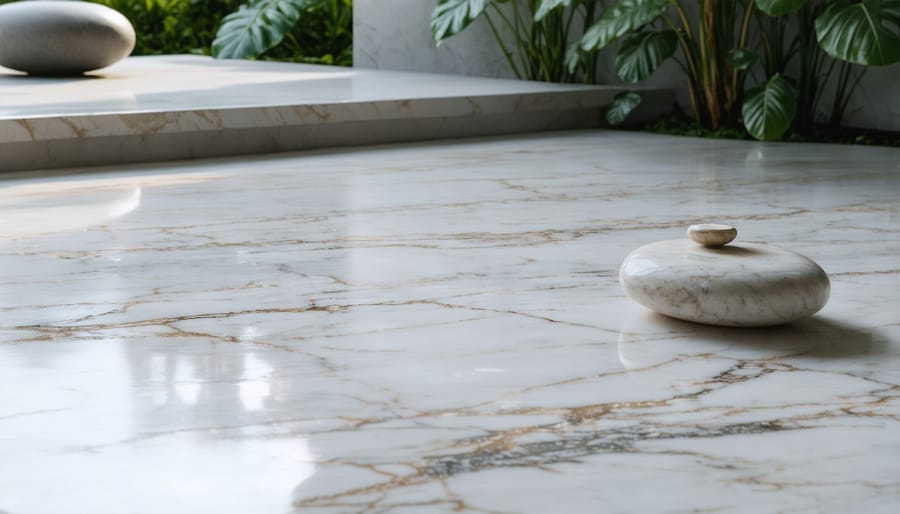
Granite’s Grounding Effect
Granite’s enduring presence in our living spaces offers more than just aesthetic appeal; it provides a profound grounding effect that can significantly impact our emotional well-being. This ancient stone, formed deep within the Earth under intense pressure and heat, carries an inherent stability that translates into our immediate environment.
The dense crystalline structure of granite naturally absorbs and regulates environmental energies, creating a more balanced atmosphere in any room. Interior designers often note that spaces featuring granite elements, whether through countertops, flooring, or decorative pieces, tend to feel more grounded and peaceful. This stabilizing effect is particularly noticeable in high-traffic areas where emotional tensions can run high, such as kitchens or home offices.
The stone’s cool, solid surface serves as a natural anchor point, helping to diffuse anxiety and promote a sense of security. Many homeowners report feeling more centered and focused when working or relaxing near granite features. This grounding effect is enhanced by granite’s natural color variations, typically in earthy tones of gray, brown, and black, which psychologically reinforce feelings of stability and connection to the earth.
Modern wellness architects increasingly incorporate granite elements strategically throughout living spaces, recognizing its ability to create emotional sanctuary zones where residents can naturally decompress and find their center.
Incorporating Emotional Balance Stones at Home
Strategic Stone Placement
The strategic placement of emotional balance stones within your living space can significantly enhance their indoor wellness properties. For optimal results, position these stones in areas where you spend considerable time or need emotional grounding. The entryway serves as an ideal location, creating a harmonious transition between the outside world and your sanctuary. In living rooms, place stones near seating areas to promote relaxation and social connection.
Bedrooms benefit from stone placement near nightstands or window sills, supporting restful sleep and morning rejuvenation. Home offices can incorporate these elements on desks or shelving units to maintain focus and reduce stress during work hours. Meditation spaces and bathrooms are particularly receptive to emotional balance stones, as these areas naturally align with self-reflection and restoration.
Consider natural light exposure when positioning stones, as sunlight can enhance their visual appeal and energetic properties. Avoid placing stones in cluttered areas or spaces with high foot traffic, as this may diminish their impact on emotional well-being.
Design Integration Tips
Integrating emotional balance stones into your existing décor requires thoughtful placement and consideration of your space’s overall aesthetic. Start by identifying key areas where you spend significant time, such as your home office, meditation corner, or bedside table. These locations maximize the stones’ potential impact on your emotional well-being.
For a subtle approach, arrange smaller stones in decorative bowls alongside natural elements like dried flowers or driftwood. Create visual harmony by selecting stones that complement your color palette – neutral tones work well with most décor styles, while bold-colored stones can serve as accent pieces.
Consider incorporating larger specimens as standalone art pieces or bookends. In contemporary spaces, position stones on minimalist stands or floating shelves. For traditional interiors, pair them with vintage brass or copper vessels. Bathroom countertops and windowsills offer perfect placement opportunities, where stones can catch natural light while adding spa-like tranquility.
Garden enthusiasts can create outdoor meditation spaces by positioning balance stones among plants or along pathway edges. Remember to rotate your stones periodically, both to refresh your space’s energy and to create new visual interest.
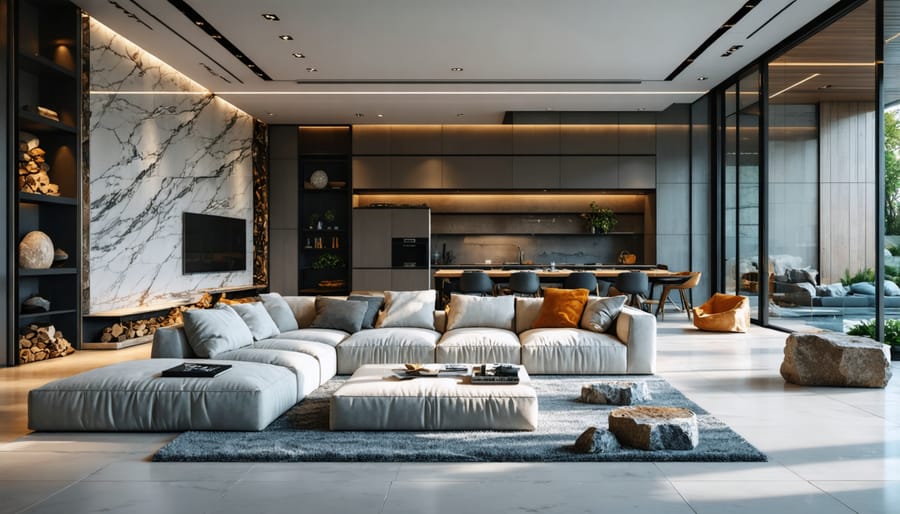
The integration of emotional balance stone in living and working spaces offers profound benefits for mental wellness and environmental harmony. As we’ve explored, these natural elements provide more than just aesthetic appeal – they create meaningful connections to nature while promoting emotional stability and peace. The holistic benefits of stone surfaces extend from improved air quality to enhanced acoustic properties, making them invaluable additions to any space designed for emotional well-being. Whether you’re renovating your home or designing a commercial space, consider incorporating these timeless materials to create environments that nurture both body and mind. Start small with decorative elements or commit to larger installations – every step toward integrating natural stone is a step toward greater emotional balance and environmental harmony.

